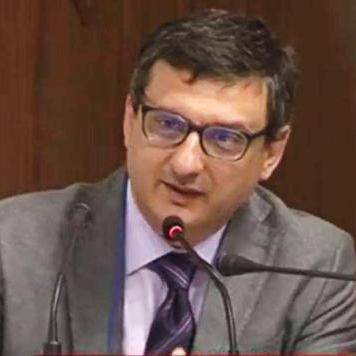Novel Evidence about Hydrogen Sulfide (H2S)-Donor Molecules as Innovative Therapeutical Tools (Volume II)
A special issue of Biomolecules (ISSN 2218-273X). This special issue belongs to the section "Molecular Biology".
Deadline for manuscript submissions: closed (22 December 2023) | Viewed by 2863
Special Issue Editors
Interests: cardiovascular pharmacology; hydrogen sulfide; nitric oxide; endothelial dysfunction; vascular inflammation; hypertension; natural products; nutraceuticals; isothiocyanates
Special Issues, Collections and Topics in MDPI journals
Interests: H2S; gasotransmitters; cardiovascular pharmacology; ion channels; metabolic pharmacology; synthetic and natural H2S donors
Special Issues, Collections and Topics in MDPI journals
Special Issue Information
Dear Colleagues,
In recent years the role of hydrogen sulfide (H2S) as endogenous pleiotropic gasotransmitter involved in the maintenance of homeostasis has been demonstrated and as a further confirmation, a decrease of H2S endogenous levels has been recorded in many pathological conditions. On these bases, the research and characterization of H2S-donor molecules, able to release H2S in a slow and gradual way, similar to the physiological production, represents the goal of many excellent research groups around the world. The aim of this special issue is to collect novel evidence about these H2S-releasing drugs in order to consider them as innovative therapeutical tools for unmet medical needs.
Dr. Alma Martelli
Prof. Dr. Vincenzo Calderone
Guest Editors
Manuscript Submission Information
Manuscripts should be submitted online at www.mdpi.com by registering and logging in to this website. Once you are registered, click here to go to the submission form. Manuscripts can be submitted until the deadline. All submissions that pass pre-check are peer-reviewed. Accepted papers will be published continuously in the journal (as soon as accepted) and will be listed together on the special issue website. Research articles, review articles as well as short communications are invited. For planned papers, a title and short abstract (about 100 words) can be sent to the Editorial Office for announcement on this website.
Submitted manuscripts should not have been published previously, nor be under consideration for publication elsewhere (except conference proceedings papers). All manuscripts are thoroughly refereed through a single-blind peer-review process. A guide for authors and other relevant information for submission of manuscripts is available on the Instructions for Authors page. Biomolecules is an international peer-reviewed open access monthly journal published by MDPI.
Please visit the Instructions for Authors page before submitting a manuscript. The Article Processing Charge (APC) for publication in this open access journal is 2700 CHF (Swiss Francs). Submitted papers should be well formatted and use good English. Authors may use MDPI's English editing service prior to publication or during author revisions.
Keywords
- hydrogen sulfide (H2S)-donor
- H2S-releasing molecule
- H2S-hybrid drug
- hydrogen sulfide
- therapeutical tool







